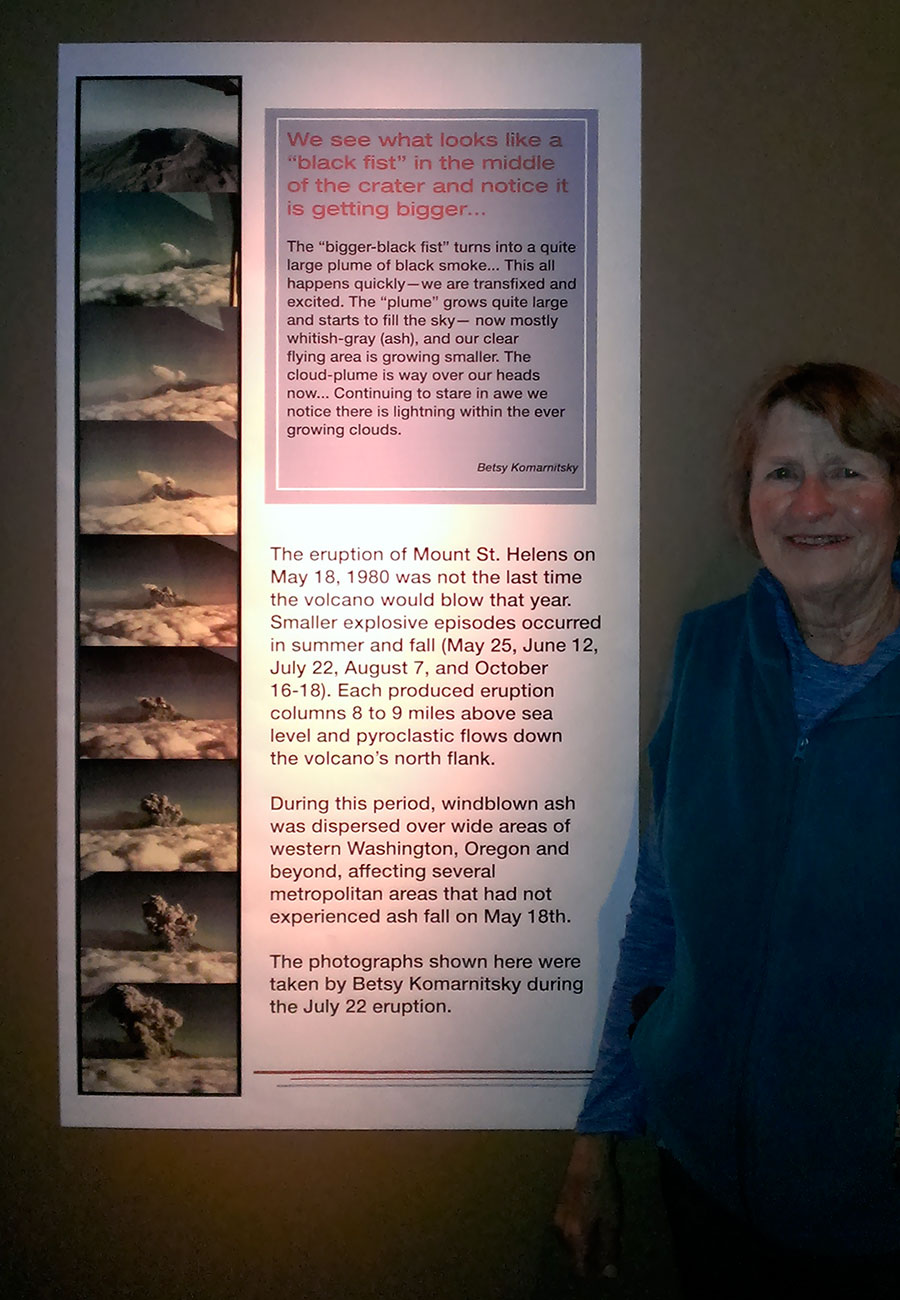I'll let my Mom take the story from there ...
July 22, 1980 is a pretty nice day and Oleg suggests we fly over Mt St. Helens to see the devastation from the May 18 eruption (last reported eruption was in 1857). He calls up our friends Phil and Virginia Carter. Phil works for Weyerhaeuser and Oleg thought they might be interested in seeing all the tree devastation.
We meet at Boeing field where Oleg is a member of a flying club. We all climb in, and Oleg gets ready for takeoff -- off we go. There is light low cloud cover and we are flying above the clouds. We are about 15 miles from the Mt St. Helens crater, enjoying our view. Oleg suggests we fly under the clouds so that we can see the "debris" from the eruption. I take a picture. [Alek: PICS ARE BELOW]
Just about that time Virginia says, "What's that?" (I snap another picture). We see what looks like a "black fist" in the middle of the crater --- and notice it is getting bigger (I snap another picture). This is getting exciting --- we are seeing a "small" eruption. The "bigger-black fist" turns into a quite large plume of black smoke (I click off a couple more pictures as it continues to grow). This all happens quickly -- we are transfixed and excited. The "plume" grows quite large and starts to fill the sky -- now mostly whitish-gray (ash), and our clear flying area is growing smaller. The cloud-plume is way over our heads now (I assume that we were at about 10-12 thousand feet). The moon is faintly outlined to the right (?) of the plume. Continuing to stare in awe we notice there is lightning within the every growing clouds. Up until now it did not seem so threatening or powerful -- just a massive growing gray cloud. (I continued to take pictures).
Oleg suggests that perhaps it would be wise to head back. (I took one last shot out the back). He did duck under the clouds and we had a look at the barren landscape below - all gray where once stood 200 feet tall trees - now flattened on the ground, all falling one direction and covered with ash.
Mount Saint Helens after the May 18th BIG volcanic eruption and just before the July 22nd one
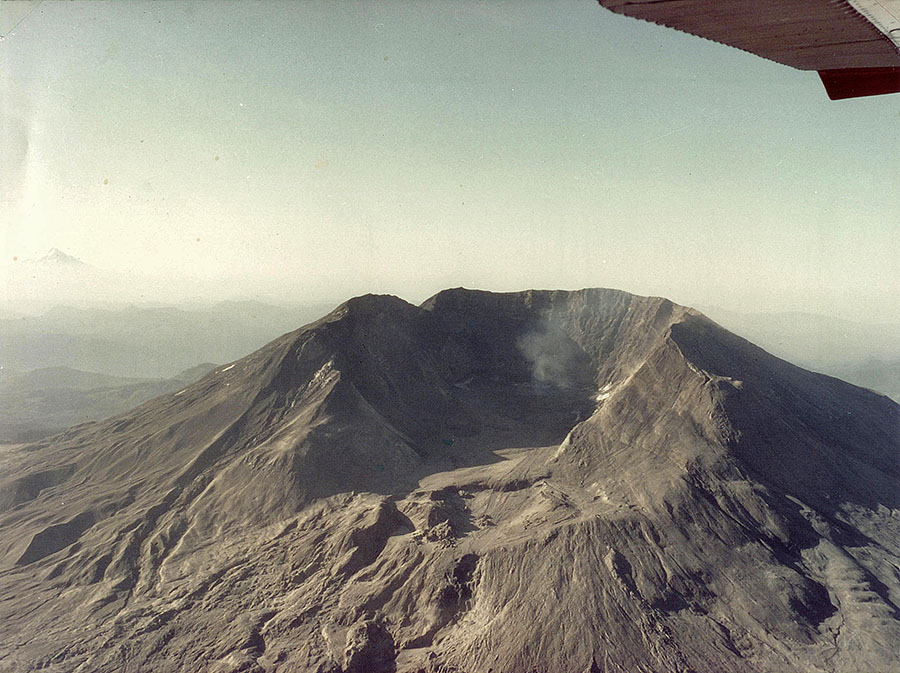
Here's the sequence of the volcanic eruption of Mount Saint Helens on July 22nd, 1980
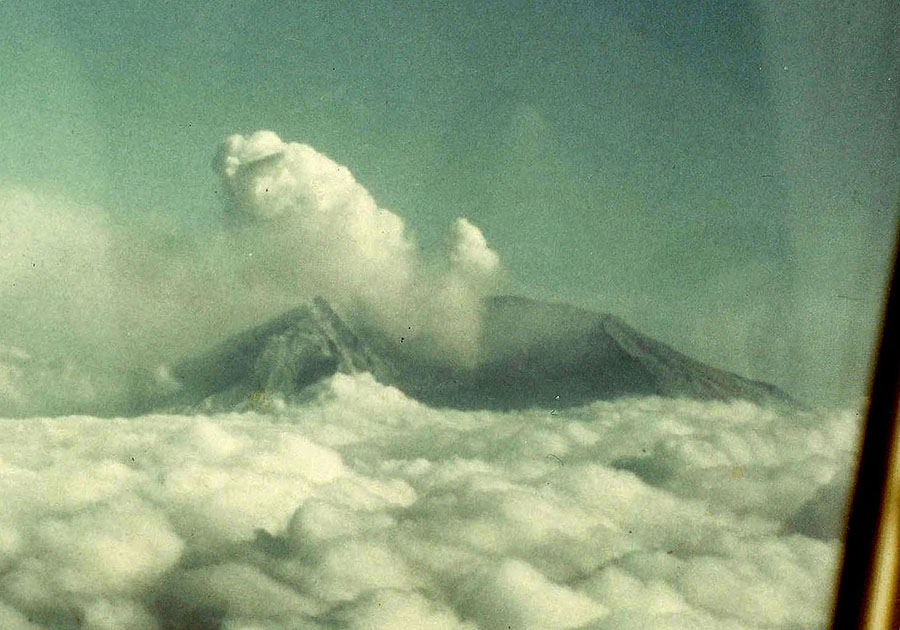
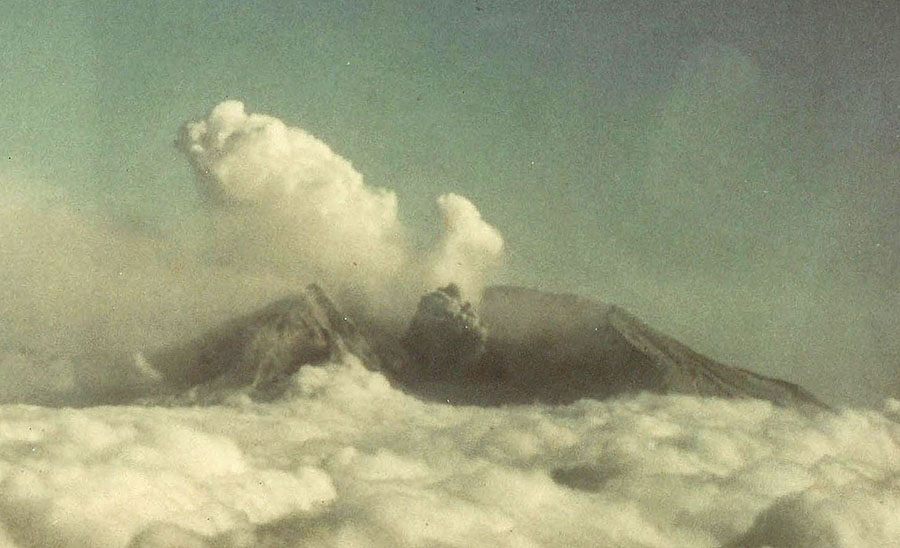
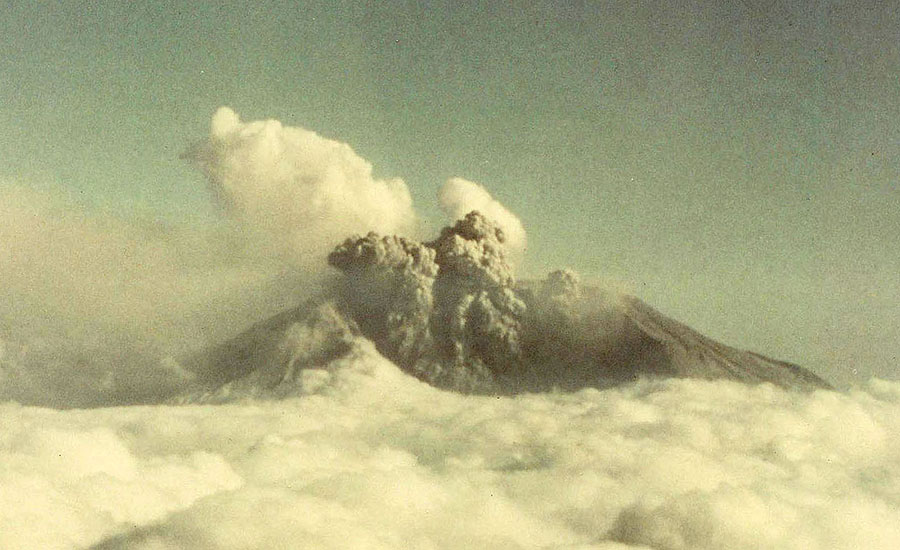
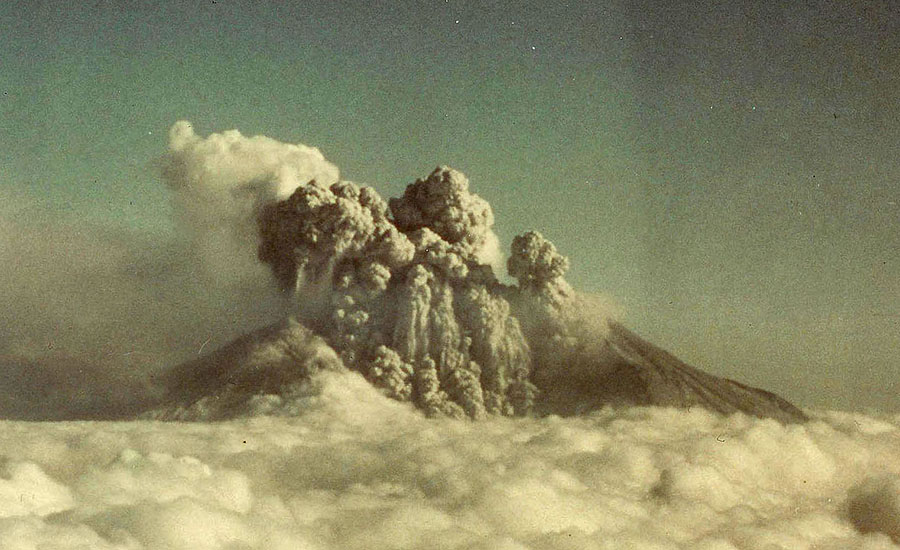
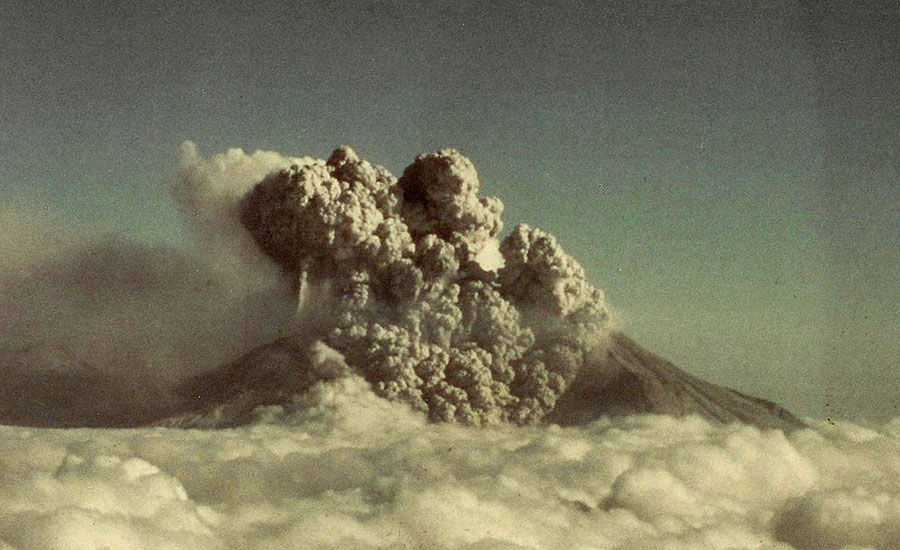
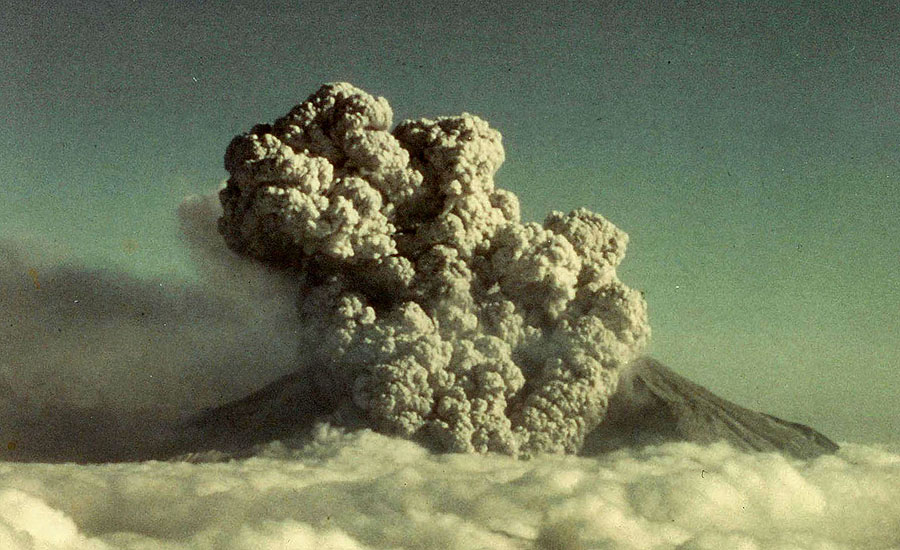
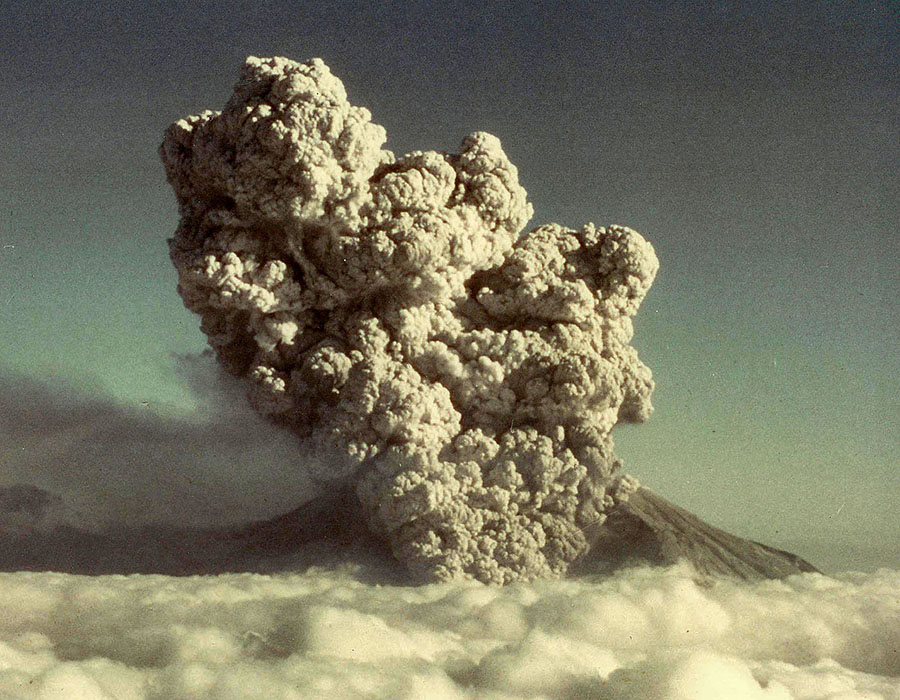
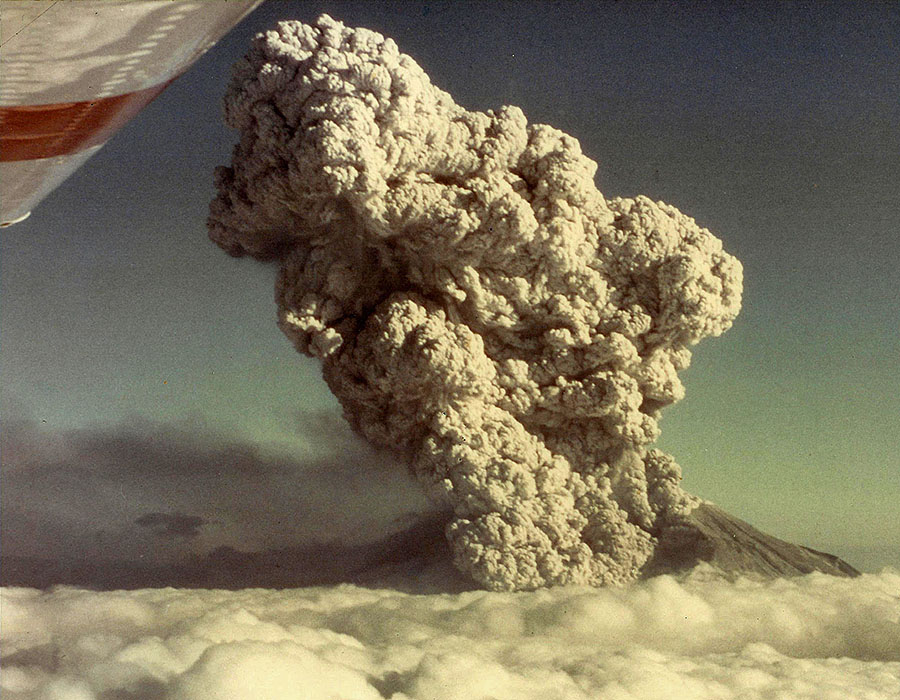
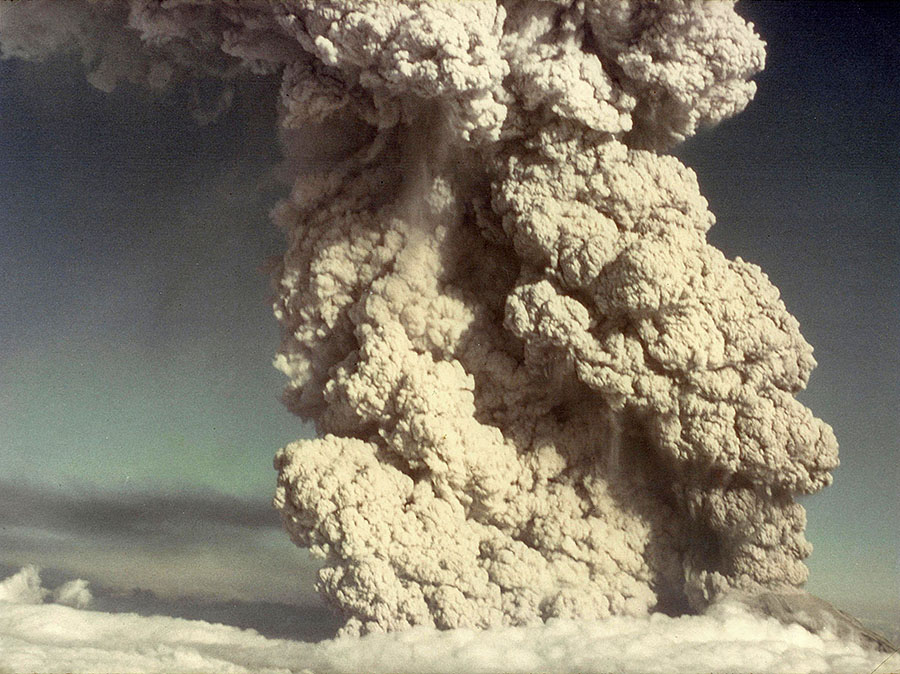
We go out for pizza (hungry after all this adrenalin). Back home there were several messages from the newspapers. We are ready to tell our story!
We call them and they sound quite interested but have a couple of questions -- the first one, "What type of film did you use?" -- Answer: Kodachrome II slide film (about the best at that time). I could tell something was amiss by the voice. He says that Kodachrome II can only be developed by Kodak, and it takes two days, so our pictures will no longer be newsworthy. (Had I used Ectachrome they could have developed it in 30 minutes -- we "store" this in our memory banks for that next adventure).
Two days later, our wonderful slides arrive, and, Oleg and I take them "around" to see if anyone is interested. The Seattle Times said that it was no longer newsworthy and that no one had died during the eruption. They did, however, take "reverse images" (if I remember correctly that is what they said) in case they can use them in some sort of "end of the year story." We also stop by Channel 7 to see if they are interested. This is our minute of glory -- on the 5PM news they run the slides as a video and mentioned our names and the story of our pictures. We also send pictures to National Geographic -- they keep them for quite a long time but eventually returned them to us.
When they opened the new visitors' center at Mt St. Helens I talked with a "ranger" there and asked if they could use some pictures of the July 22 eruption. They were interested --- I sent them but never heard anything and have thought that I would like to visit there on July 22nd some year and see if they used them. It seems to me one of the pictures was also used on a cover (?) of some Boeing magazine.
[Alek: I recall it being on the cover of some sort of flight crew publication talking about the hazards of flying into/near volcanic ash]
Photography Notes: Mom took these with her point-n-shoot film
camera from a light airplane piloted by Dad. The series of
8x10 prints were pretty nifty to look at then and over the years.
Finally, 30+ years later, I scanned in the images which had some variability in the colors from the
print process a bit of age-related damage and dust/scratches.
They were then straightened/cropped for the website.
Note: The July 22nd, 1980 eruption blew 13.1 million cubic yards and was the 4th largest after the initial May 18th blast.
USGS Report on it plus
nifty pictures by others
here and
here.
Here's what Mount Saint Helens looked like BEFORE the big May 18th volcanic eruption
Very picturesque similar to nearby Mount Rainier
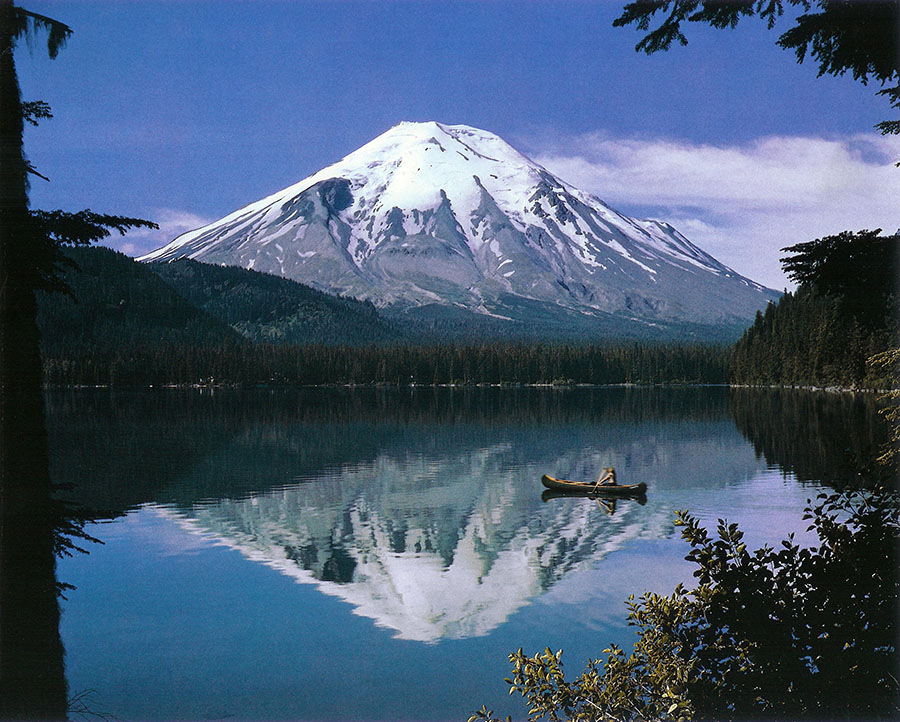
In 2015, Mom's pictures were exhibited at the Washington State History Museum
